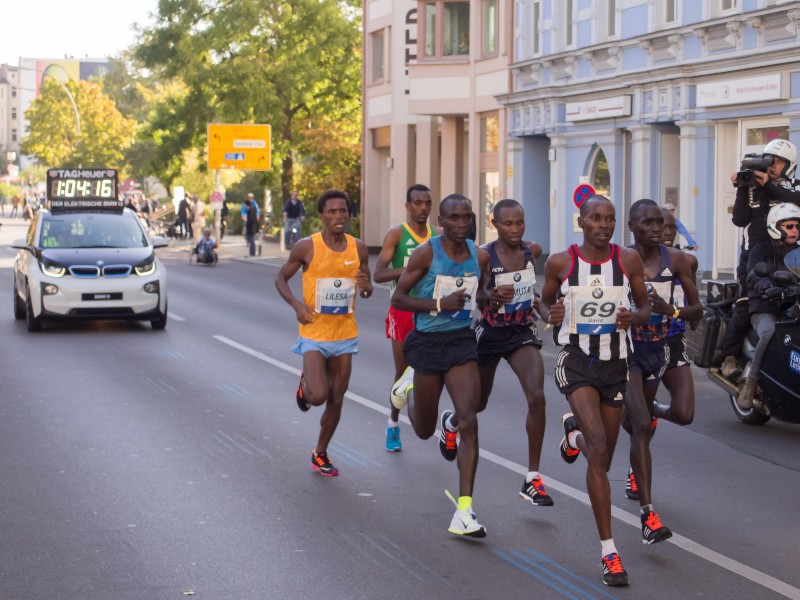What can we all learn from the world’s fastest marathon runner?
Mark Green

Eliud Kipchoge is widely regarded as the greatest marathon runner in history. He won the Olympic marathon in both 2016 and 2020 and set a marathon world record of 2:01:09 at the Berlin Marathon in 2022.
Before that, Kipchoge set another world record at the 2018 Berlin Marathon with a time of 2:01:39, breaking the previous record by 1 minute and 18 seconds — the largest improvement since 1967.
In addition to these records, Kipchoge is a four-time winner of the London Marathon and a five-time winner of the Berlin Marathon. He has won 15 of the 18 marathons he has competed in.
While Kipchoge’s achievements are impressive, some might think, “He’s a professional, so his methods don’t apply to me.” However, this couldn’t be further from the truth. Training methods evolve over time, and elite athletes often influence these changes. This is especially true in running, where we can all learn from Kipchoge’s approach to become faster and more efficient runners.
How Much Aerobic / Slow Running Are You Doing?
Whether you’re a 5K runner, a casual jogger, or even someone who’s training for ultra-endurance events, there’s a lot you can learn from Kipchoge. His training techniques and philosophies can help improve your performance, no matter your level.
Take a look at the progression of training methods in running over time. Back in 1886, Walter George set a world mile record of 4:12.75 while training just three or four miles a day. Fast forward to 2013, and Mo Farah set a British record for the 1500m (metric mile), running more than 100 miles per week.
Between these two records, there was a huge shift in training techniques. Over the years, training evolved from a mix of about 50/50 slow running to fast running, and now, 130 years later, there is a much bigger focus on high-volume slow running with some fast training mixed in.
The Biggest Mistake Most Recreational Runners Make
The biggest mistake many recreational runners make is training too fast too often. They push themselves too hard, leading to injury and burnout.
For the past 40 to 50 years, since the 1970s running boom, many runners have overtrained, leading to performance plateaus and injuries. The current high injury rate among runners is largely due to training at too high a volume and intensity for the body to handle.
To avoid these problems, consider using tools like heart rate monitors to guide your pace. For instance, our Base Training Plan teaches runners how to use heart rate to run at an appropriate pace, focusing on building endurance without overdoing it. We also have a Marathon Training Plan that follows the 80/20 rule: 80% of runs are easy, aerobic runs, while 20% are harder anaerobic sessions.
Why Kipchoge’s Approach Works
Kipchoge has maintained his elite status for over 20 years. His first world junior cross-country title was in 2003, and his most recent marathon win was in 2023. So, what’s behind his consistency and longevity?
While Kipchoge has some genetic advantages, such as a high strength-to-weight ratio and a natural ability to avoid injury, his training approach also plays a big part. He doesn’t overextend himself and he works hard to maintain a sustainable routine. For example, Kipchoge reports that he never trains harder than 80% of his capacity, saving the rest for race day.
Kipchoge’s Training Plan
Kipchoge runs 110 to 120 miles per week, which is a lot more than most runners should attempt. However, what’s more important is how he runs those miles.
While Kipchoge is capable of running at very fast paces, the majority of his training is done at a slower, aerobic pace. Even his interval training stays within aerobic limits, barely exceeding his MAF (Maximum Aerobic Function) heart rate. He never trains harder than 90% of his max heart rate, which helps him recover faster and avoid injury.
Most recreational runners tend to push their heart rates too high, especially during intervals, which can cause more stress on the body and longer recovery times. By keeping your heart rate below 90% of max during anaerobic training, you can maintain a higher overall training load with less risk of injury or overtraining.
Kipchoge typically runs four easy days per week, with a pace that’s 45 seconds to 1 minute 20 seconds slower than marathon pace. This would be the equivalent of training at 7:15/km pace if you could race a marathon in 3 hours 30 minutes. While this might sound slow, it is essential to developing your aerobic capacity, and over time, if you train aerobically, your pace will naturally improve.
Applying Kipchoge’s Principles to Your Own Training
If you’re aiming to run a marathon in under 3 hours or under 4 hours, Kipchoge’s approach can help you reach your goal. You don’t need to constantly push yourself to the limit. In fact, overtraining can slow you down and increase the risk of injury.
To apply Kipchoge’s principles, try these strategies:
- Keep your easy runs below your MAF heart rate.
- Perform harder runs with a heart rate only 10 to 15 beats above MAF.
- Never exceed 90% of your max heart rate in any training session.
For more detailed guidance, check out our 16-Week Marathon Plan, which includes these principles and covers running technique, fueling, strength, stability, and injury prevention.